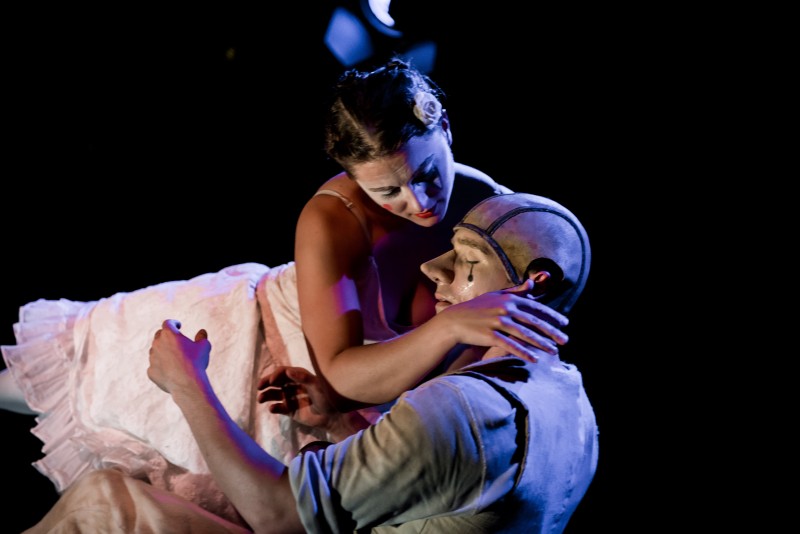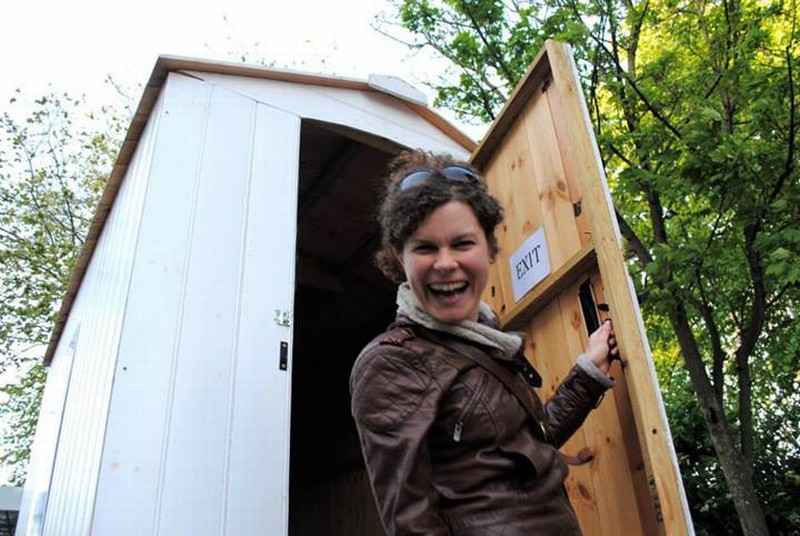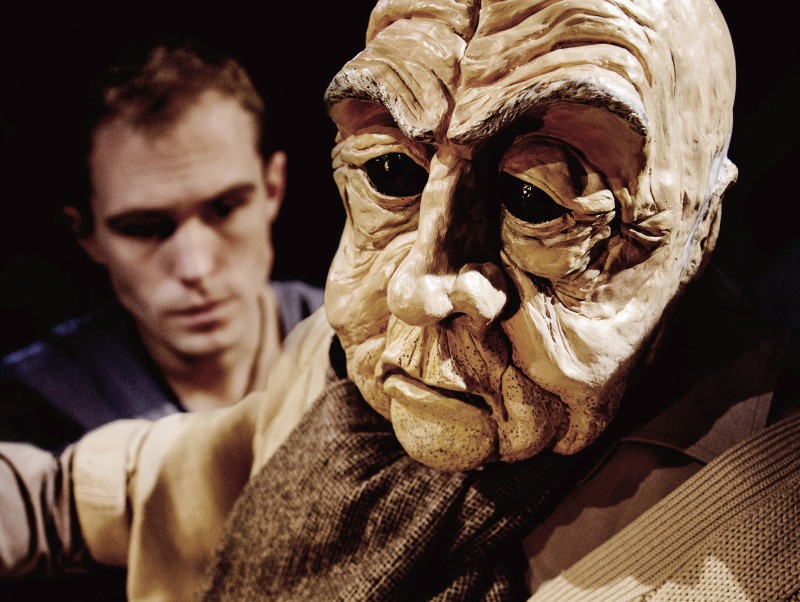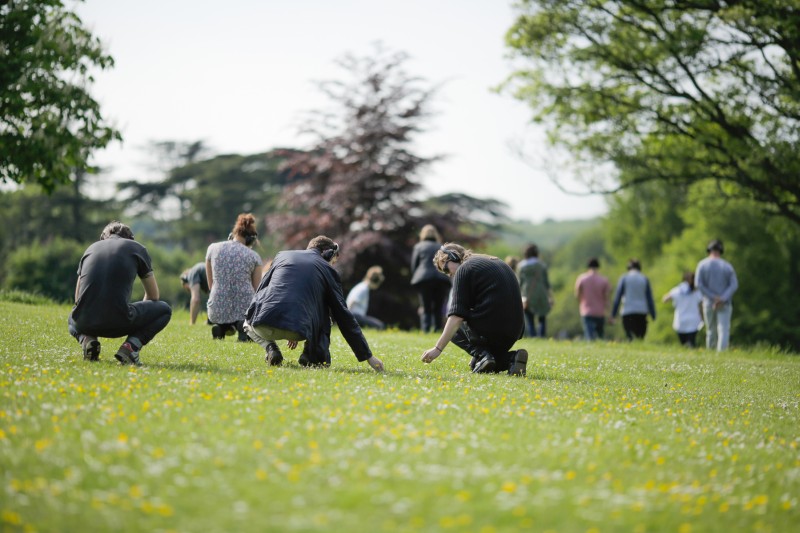 Theatre Re are a young French-English company exploring corporeal mime to tell stories that walk the tightrope between fantasy and reality. In The Little Soldiers the apparent setting is a circus, figured by a string of pendant tungsten bulbs draped attractively across a stage peopled by three grease-painted archetypes of silent movie styled commedia. The air of a nostalgic celluloid world is enhanced by the live score mixed and performed by Alex Judd who weaves and loops keyboard, violin and vocal riffs into an absorbing and near continuous sound track.
Theatre Re are a young French-English company exploring corporeal mime to tell stories that walk the tightrope between fantasy and reality. In The Little Soldiers the apparent setting is a circus, figured by a string of pendant tungsten bulbs draped attractively across a stage peopled by three grease-painted archetypes of silent movie styled commedia. The air of a nostalgic celluloid world is enhanced by the live score mixed and performed by Alex Judd who weaves and loops keyboard, violin and vocal riffs into an absorbing and near continuous sound track.
The story is also archetypal: two performing brothers (perhaps magicians, perhaps acrobats, the company don’t seem interested in concretising their world) compete for the affections of a suitably disdainful yet flirtatious ballerina. The competition is readily metaphorical and imagistic – the world already exists in this language – and the ballerina’s tightrope is, after all, simply a power cable to the microphone stretched taut across the ground. More often than not the brothers vie for the ‘real’ trappings of the stage – its spotlight (a very effectively manipulated lantern on wheels), microphone, or centre-stage stepladder. This resonates with the company’s aim to blur inner dreams with illusion by playing with actual on-stage realities in a poor theatre aesthetic to create their images. It’s a language that establishes a stylish melee of shifting scenarios – a chase, a cliff-top fall, an underwater world – that rise and fall, but it also has the effect of removing consequence and weight from their storytelling.
Placing jealously and competition at the heart of the story demands some investment in character for the mime to move beyond slapstick, but more often than not I found myself lost in the interplay of images and unable to invest in the characters or their world. The lines defining fantasy and reality were never drawn precisely enough to support effective play with them as the show developed. There are many interesting ideas being explored here and a great deal of detail in the performances, though the movement languages weren’t always as crisp as they could have been, but I longed for a little more rigour in their application. Where were the audience situated in this circus staging, for example? What was the trigger for the jealously to develop into rage? Theatre Re are a company with clearly developed craft in their mime work, but in order to tell a story that’s satisfying as well as beautiful, the theatre strand of their work also needs to be crafted.









